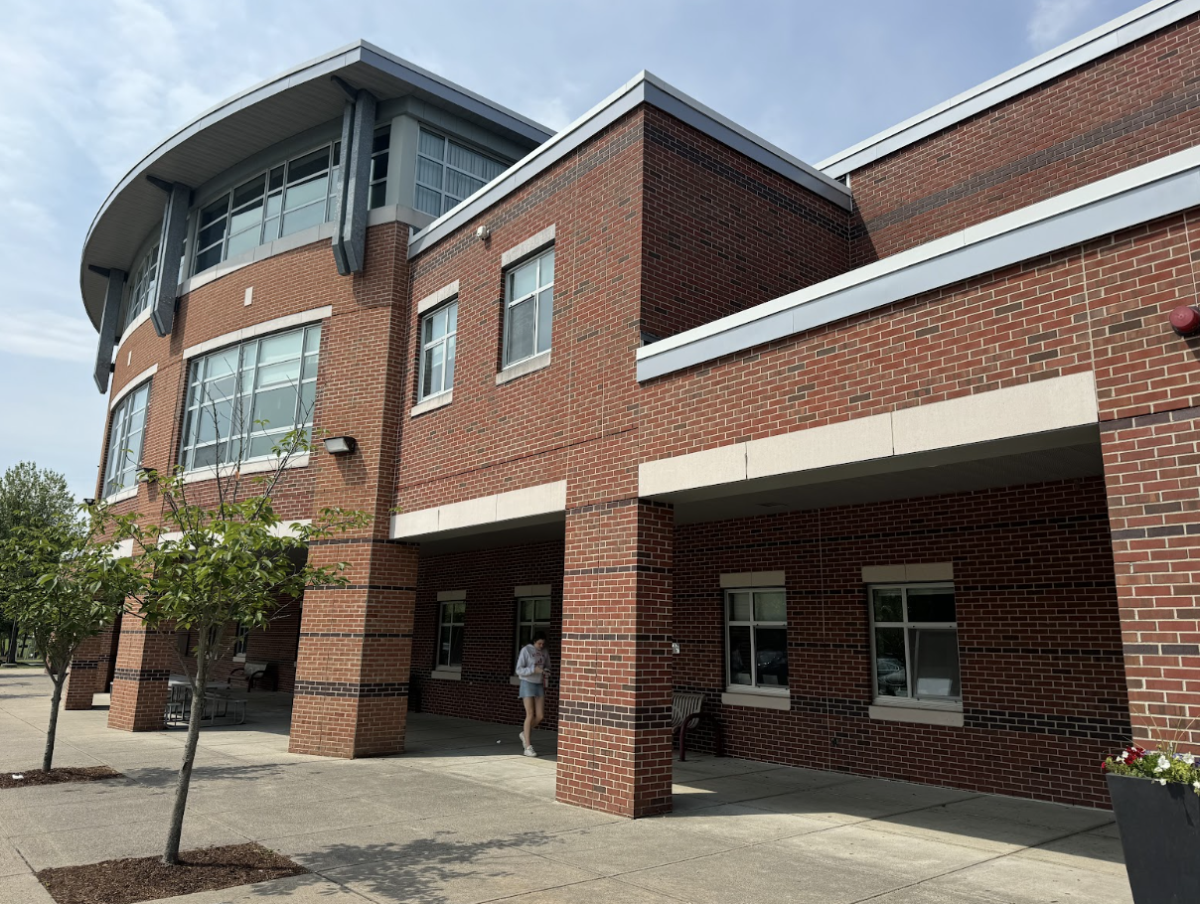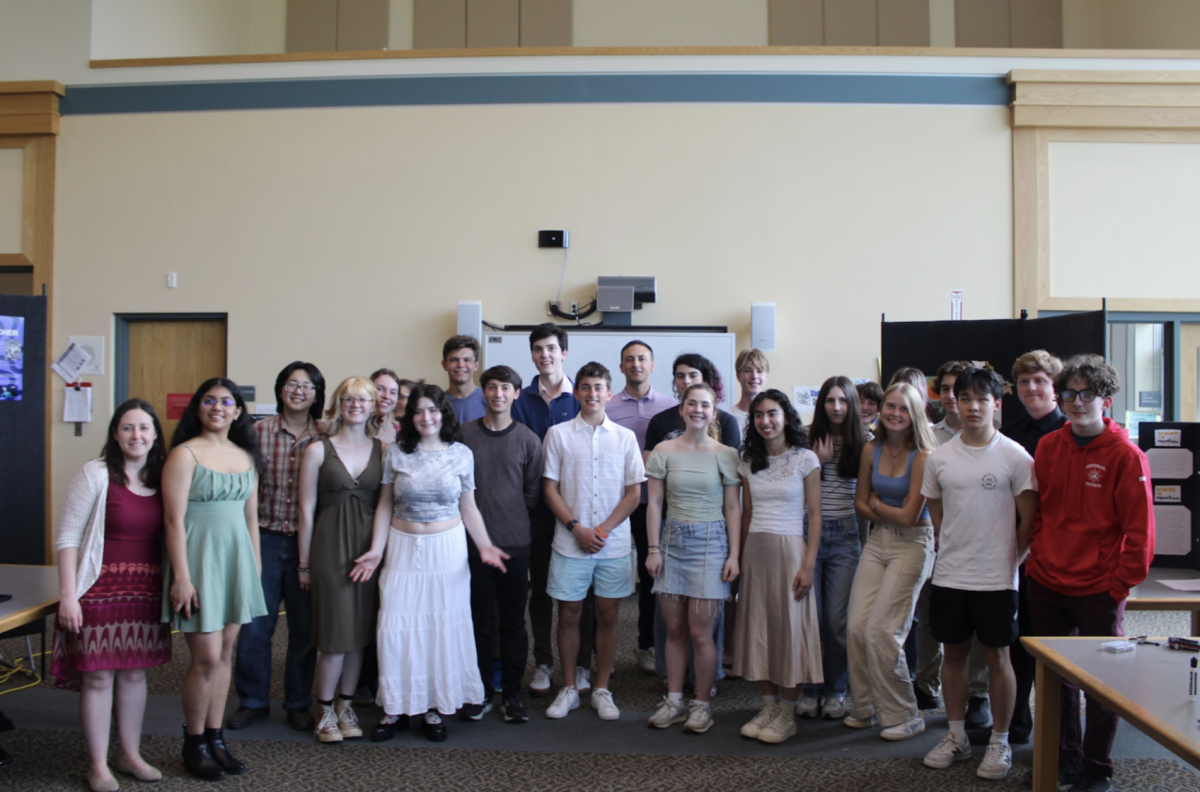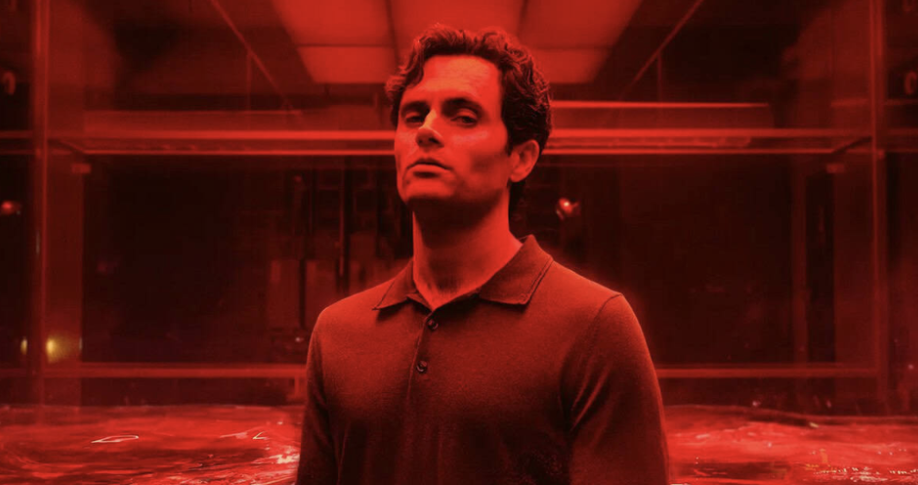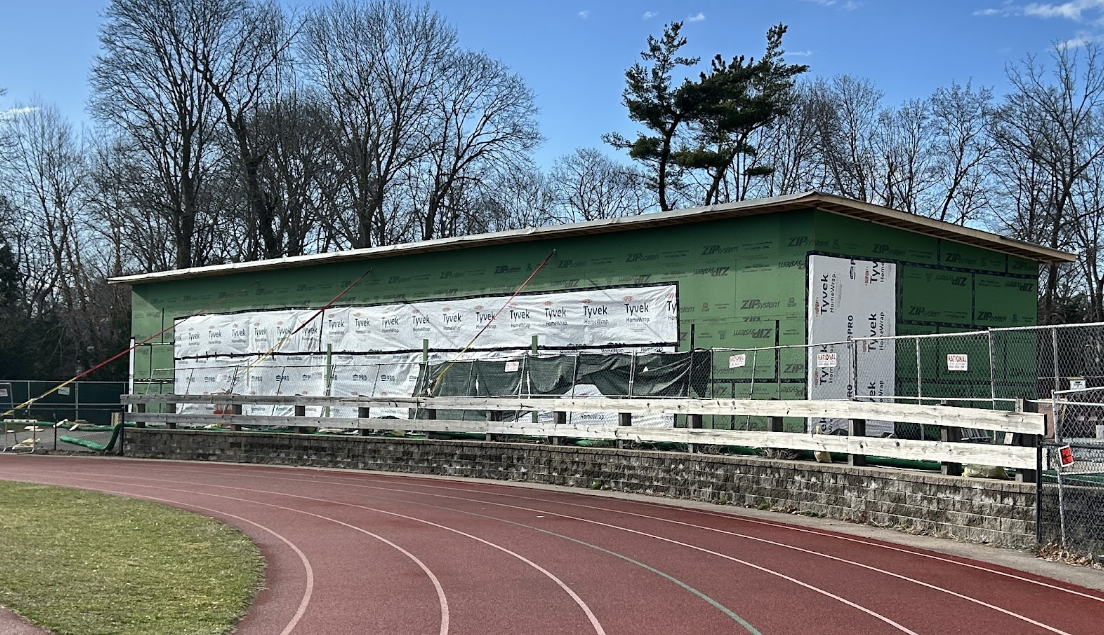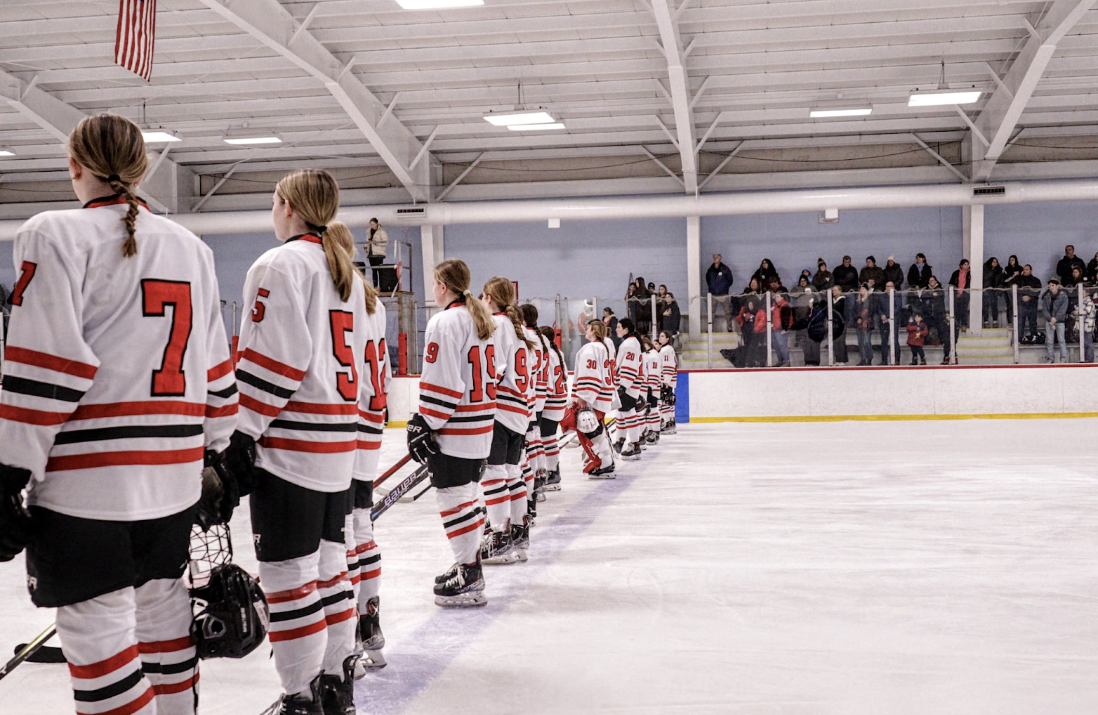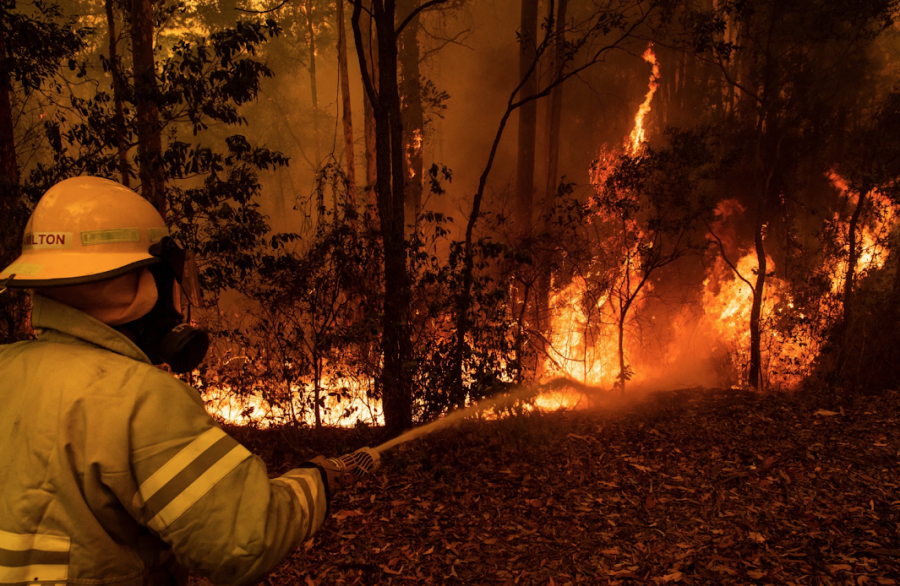Wildfires Cause Massive Destruction in Australia
Matthew Abbott/ The New York Times
Both professional and volunteer firefighters have been risking their lives to put out the fires in Australia.
January 13, 2020
Since September 2019, bush fires have been ravaging Australia. As of January 6, 136 fires have been recorded (CNN). Though the area endures bush fires every summer, this season has already hit Australia hard and managed to pave its way into Australia’s history books as one of the most damaging and devastating fire seasons yet. Unfortunately, the season is expected to continue for another 4-6 weeks.
Where in Australia has been affected?
The fires have spread to every Australian state, but the most damage continues to be on the southeastern coast, specifically in New South Wales and Victoria. As of January 8, the fires have burned more than 17.9 million acres of land. In New South Wales alone, 12.1 million acres have burned (CNN). In Sydney, located in New South Wales, the air quality has now reached 11 times the “hazardous level”(CNN). For more information regarding where the fires have been burning, take a look at this graph from the New York Times.
How have Australian citizens been affected?
Because of the extent of the fires, different areas have taken different steps in keeping their citizens safe. Many schools and businesses have been closed, and thousands of Australians have had to evacuate their homes. So far, the fires have destroyed nearly 2,000 homes. Numerous agencies, such as the New South Wales Rural Fire Service, have posted on social media to encourage people to leave dangerous areas before the fires hit. Others are advised to stay inside their homes and be prepared to fight a fire. Even with precautions, 27 fatalities have occurred as of January 10.
How has wildlife been affected?
Home to hundreds of native species, Australia’s charred habitats provide little hope for the future. Millions of animals have fought for their lives in recent months as the wildfires ruin not only their homes, but also the air, food sources, and the balance of the ecosystem. While the New York Times reports help from New Zealand and the Netherlands in the form of handmade pouches and mittens for burn victims, volunteers’ aid cannot reverse the irreparable damage. Over 480 million animal lives have been lost, according to a statement from the University of Sydney (CNN). Sophomore Cara Chiapinelli responds, “I’ve seen some of the photos online of animals running from the fire. It’s hard to imagine what life must be like in Australia right now.”
As the fires rage on despite efforts for containment, extinction is becoming a very realistic fate for many vulnerable species. Dwindling numbers subject many species, including the kangaroo island dunnart, glossy black cockatoo, mountain pygmy possum, regent honeyeater to grave danger and possible extinction (USA Today). Innocent koalas endure life-threatening conditions across the continent, with up to 30% of the New South Wales population gone (USA Today). Sophomore Emily Conroy comments, “I think that it’s really sad…many endangered animals are being killed off and that is really bad for the environment and biodiversity.” She adds, “it is good though that many celebrities and people are spreading awareness and donating.” As heart-wrenching records of these unfortunate fatalities spread, hundreds of leaders have taken in and cared for kangaroos, koalas, and other wildlife with the resources they have.
Why are the fires so bad this year?
Australia fights fires every summer, but this year the fires have been exceptionally worse due to three culprits: record-breaking temperatures, minimal rainfall, and strong winds. Experts warn that the fire seasons are only going to increase in intensity as climate change does so as well (New York Times).
Australia’s economy relies on coal production, a major factor in climate change. The current, conservative government has been working hard to preserve the coal industry by taking the blame off of climate change, especially when discussing the fires.
Greg Mullins, the former Commissioner for Fire and Rescue for New South Wales, however, commented in an interview with NPR, “our [greenhouse gases] emissions have been going up every year under this government, not down. And as fire chiefs, we’ve been watching the wildfire situation, our cyclones, our hurricanes, our storms, our floods get worse and worse as extreme weather just gets more and more extreme” (NPR).
How does this change views on climate change?
Mullins continued in the interview, “there’s a lot of debate in Australia, but the public is screaming for action now…They’re frightened. People in Sydney are all coughing because we’re covered in smoke.” This fire season has demonstrated the disastrous toll climate change is taking, not just in the future, but today, to an extent that is alarming, but inspiring, many more than before.
Sophomore Jade Weggeman remarked, “the Australia fires are proof of how devastating climate change is to our planet. I can’t believe how far this has gotten.” Sophomore Anthony Longo agreed, reflecting “the devastation that the fires have already caused is outrageous, especially given that summer in Australia isn’t in full swing yet. Things are only going to get worse unless we continue to do more to help the citizens and wildlife affected by these fires.” Weggeman adds, “taking steps to improve our environment is so necessary right now.”
How can you help?
The tear-jerking stories of loss and devastation in Australia have exploded through the news and onto social media platforms such as twitter, instagram, and facebook. While the surrounding countries have rallied around to support Australia in its time of need, one may wonder what they can do to help from thousands of miles away. However, it is in times like these when the world needs to rise up to the challenge and unite to solve the wildfire crisis. In the midst of ruin and despair, here are some ways you can make a difference:
- Educate yourself on climate change and reduce your carbon footprint. The global climate crisis exacerbates the conditions in Australia and fuels the fires. Awareness of climate change and effort to prevent it will lower the risks of fires occurring in the future.
- Give to the Australian Red Cross. Lend a hand to the evacuees who have lost everything. For hundreds of families without homes, clothing, food, and other necessities, the recovery centers are their only means of survival. Click here to help.
- Donate to the firefighters! These hard working men and women are risking their lives to protect their country, and many of them are volunteers. Click here to donate to the New South Wales Fire Service.
- Support the animals. While many have tragically perished, the survivors face a long road to recovery. Leaders have stepped up to rehabilitate these animals, but supplies are limited. Australia’s largest wildlife organization, WIRES, is accepting donations here.






